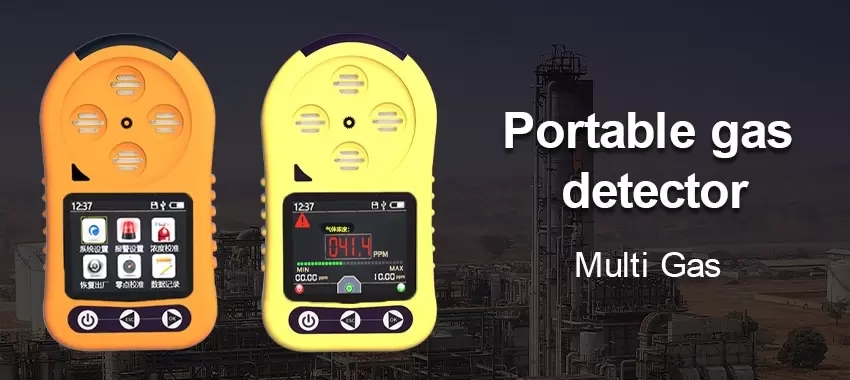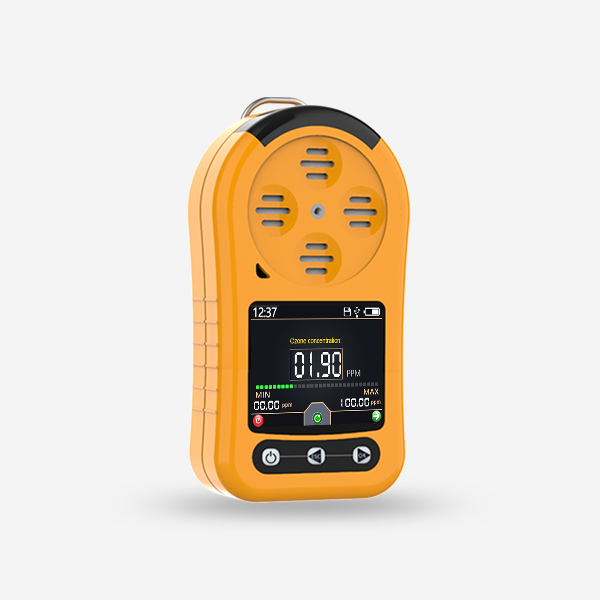Multi-gas detector Introduction
Multi-gas detector are an essential tool in industrial safety, providing the ability to detect hazardous gases in the working environment. These devices play a critical role in ensuring the safety of workers, preventing potential accidents, and monitoring air quality in industrial settings. This essay explores the significance of multi-gas detectors in the context of industrial safety, environmental protection, and the broader implications for safeguarding human health and the environment.

Enhancing Industrial Safety
Multi-gas detectors are indispensable for enhancing industrial safety by enabling the real-time detection of toxic, flammable, and oxygen-deficient atmospheres in workplaces. These devices are designed to detect a multitude of gases, including carbon monoxide, hydrogen sulfide, methane, and volatile organic compounds, providing early warnings and alarms in the event of gas leaks or exposure. By promptly alerting workers and safety personnel to the presence of hazardous gases, multi-gas detectors play a pivotal role in preventing potential accidents, minimizing the risk of fire or explosions, and facilitating timely evacuation in the event of an emergency. Furthermore, the portability and durability of modern multi-gas detectors make them essential for use in confined spaces, hazardous industrial facilities, and other high-risk environments, ensuring the safety and well-being of workers in diverse occupational settings.

Environmental Monitoring and Compliance
In addition to their role in industrial safety, multi-gas detectors are instrumental in environmental monitoring and regulatory compliance. These devices enable environmental health and safety professionals to assess air quality, monitor emissions, and conduct leak detection in industrial operations, thereby ensuring compliance with environmental regulations and standards. By detecting and quantifying the presence of pollutants and toxic gases, multi-gas detectors contribute to the protection of air quality, the prevention of environmental contamination, and the mitigation of potential harm to ecosystems and public health. Moreover, the data collected from multi-gas detectors can inform environmental impact assessments, pollution control measures, and the development of sustainable practices in industrial operations, promoting responsible stewardship of natural resources and the environment.
Technological Advancements

Advancements in sensor technology and data management have driven the evolution of multi-gas detectors, leading to the development of highly sensitive, reliable, and user-friendly devices. Modern multi-gas detectors are equipped with advanced sensor arrays, wireless connectivity, and data logging capabilities, enabling comprehensive gas detection, remote monitoring, and data analysis. Furthermore, the integration of multi-gas detectors with cloud-based platforms and predictive analytics facilitates real-time data visualization, trend analysis, and proactive maintenance, empowering industrial operators and safety professionals to make informed decisions regarding gas monitoring and risk mitigation. These technological advancements are instrumental in enhancing the effectiveness and efficiency of multi-gas detectors, supporting their widespread adoption as essential tools for industrial safety and environmental protection.
Challenges and Opportunities
While multi-gas detectors offer significant advantages, challenges related to sensor calibration, cross-sensitivity, and maintenance requirements persist. Ensuring the accuracy and reliability of multi-gas detector readings necessitates regular calibration, quality assurance, and adherence to manufacturer specifications. Additionally, addressing cross-sensitivity issues and potential interference from other gases presents opportunities for sensor innovation and algorithmic refinement to enhance specificity and selectivity in gas detection. Furthermore, promoting user training, best practices, and standardized protocols for multi-gas detector usage presents opportunities for improving the effectiveness of gas monitoring programs and ensuring the safety of workers and the environment.
Conclusion
In conclusion, multi-gas detectors are essential for ensuring industrial safety, protecting the environment, and safeguarding human health in diverse occupational settings. These devices play a pivotal role in detecting and monitoring hazardous gases, enabling proactive risk management, and facilitating compliance with safety and environmental regulations. As technology continues to advance, the integration of multi-gas detectors with data analytics and remote monitoring capabilities holds promise for further enhancing their role in industrial safety and environmental stewardship.
